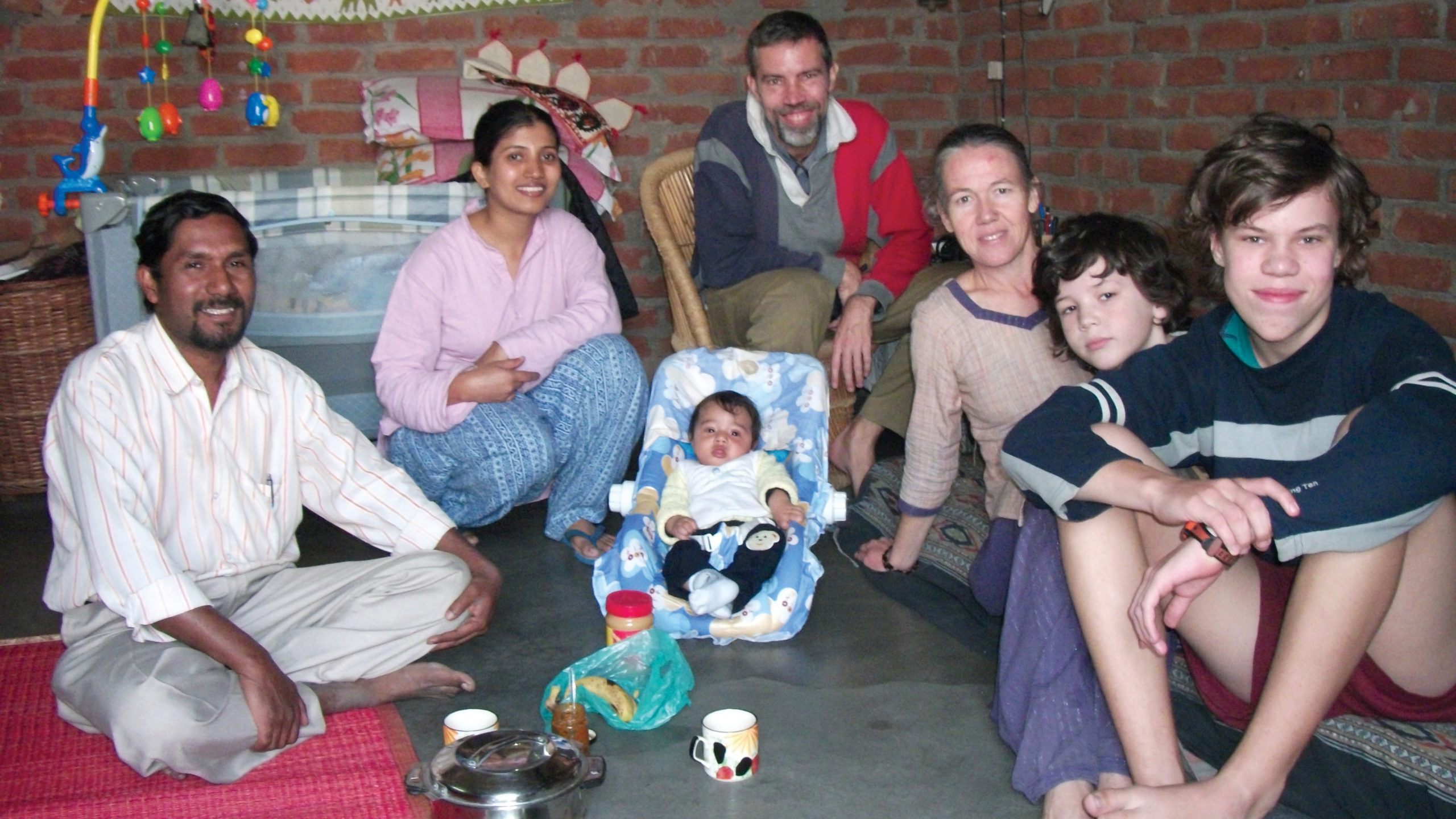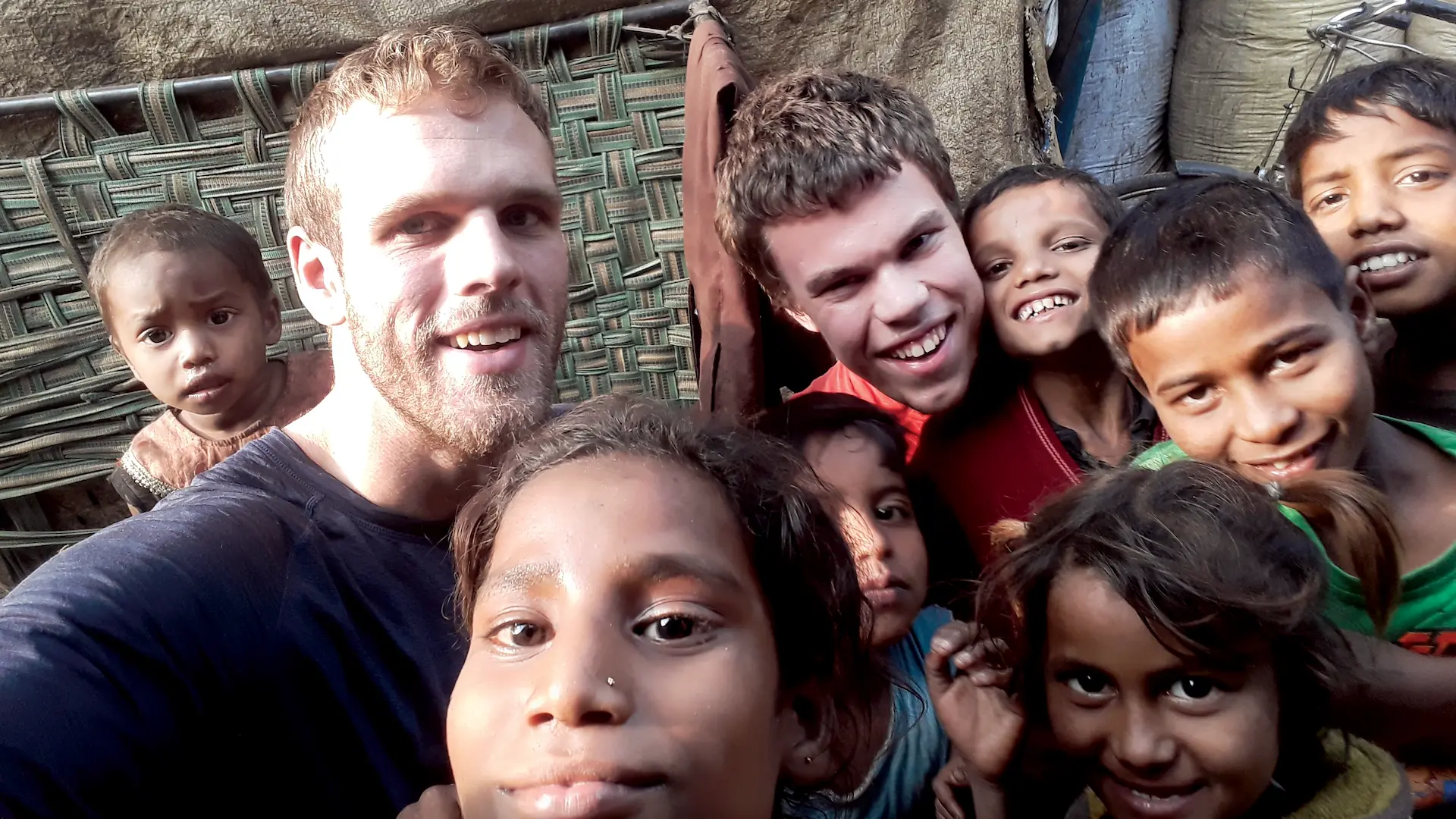
In working to reduce the threat from climate change, the good news is that leading a low-carbon life is not only doable, but can be a fulfilling and fun way to live. We should know. We’ve attempted to live low-carbon lives in both middle class Australia and the slums of India. In fact, our love for the natural world has, somewhat ironically, grown out of our living in places with very little natural beauty: poor urban neighbourhoods in north India, places that many would call slums. My wife Cathy and I, along with our sons, Tom and Oscar, have lived there for over 13 years. Why would anyone in their right minds choose to do that?
How it all began
In my second year of university I started to take my Christian faith more seriously. At its core, that faith challenged me to move from a purely self-centred life, towards being mindful of others around me, especially those at the bottom of society. Intriguingly, my new-found faith also suggested that to the extent to which I shifted my orientation from myself to others, life would actually become more meaningful and fulfilling. As a result, I began to question the normal “life map” laid out by society for middle-class young people like me: completing a university education, getting progressively higher-paying jobs, buying a house and retiring early to a life of leisure.
Disturbingly, it seemed as though my role models did not advocate such a life map at all. Jesus, Martin Luther King, Mother Teresa and Gandhi directed most of their energy toward caring for the outcasts of society: the homeless, the lonely, the sick, the marginalised and the misfits. Even worse, they confronted those in power—the politicians, religious leaders and wealthy rulers—who were largely responsible for pushing people to the margins. If I were to model my life on these heroes, it seemed to require using whatever skills and resources I was privileged enough to possess, to care for others, rather than to “feather my own nest.”
So, while finishing my law studies and working for a few years, I started to look at the bigger picture of the world and considering careers through which I might somehow make a difference. Practising law may have led to a career within the UN or politics through which I may have eventually been able to bring about some positive change for the poor, but that was going to be a long road. I wanted a more direct path to responding to the broken world around me.
From a couple of months in India during my university holidays, I knew that the needs in the developing world were enormous. One incident in particular had a profound impact on me. I met a man outside his house (a plastic shack). With my limited Hindi, I learned that his wife had just given birth to their child, right there in their hut, without any medical help. As I said goodbye, I shook his hand. It felt like ice. It was the middle of winter and he was clearly struggling to stay warm. It was a very simple interaction, but one that changed my life. I was deeply affected by the idea that I was leading a privileged life, with world-class education and healthcare, purely by virtue of being born in the West. Meanwhile, this man’s life was incredibly difficult, simply because he was born into a poor family in India. That difference seemed terribly unjust to me, so I decided to do my part to redress it.
My wife Cathy has been on a very similar journey. We were convinced that God loved the poor and wanted to alleviate their suffering. So did we.

Humble approach
Many development and aid organisations, both Christian and secular, operate off a model of external experts coming in to provide the solutions. However, Cathy and I didn’t want to presume that we, as relatively inexperienced outsiders, could add anything to the fight against poverty in India. So when we moved to India, we went with a group whose distinctive approach involved living with the poor in their neighbourhoods. The experts on poverty, after all, are the poor themselves! The first step to helping the poor is learning about their lives, and growing to love them. It is only from this foundation that our various interventions—assisting people to find jobs, helping with medical emergencies, teaching kids to read—have been possible.
This model—living with the people you’re serving—is inspired by Jesus. Rather than saving the world from the distant safety of heaven, he entered it: walked around, talked to people, heard their pain and, where He could, brought solace and healing. We, too, strive to not just to talk about Jesus’ love for the poor, but live it out. However, this is a two-way movement. We hope our neighbours see Jesus’ love reflected in our lives, but we certainly see God’s goodness reflected in them too. We have seen remarkable compassion, solidarity and hospitality in the lives of our poor friends.
Emerging threat
As we’ve sought to respond to the broken world around us, the nature of this “brokenness” has changed somewhat over the years. When we first went to India in the mid 90’s it was the huge gulf between the rich and the poor that motivated us. While that gulf is still there, another issue of enormous import has emerged that has the potential to worsen, indeed end the lives of millions of the poor: climate change.
If our atmosphere warms more than 2°C above pre-industrial levels, we will face more frequent natural disasters, the extinction of thousands of species, sea level rise measured in metres, food shortages and possible climate-related wars. These changes will happen within this century unless we, as a global community, limit our carbon dioxide emissions to around 800 gigatonnes for the remainder of the century. That might sound like a lot, but it averages about two tonnes per head per year for everyone on the planet. At the moment, Australians emit 23 tonnes per year. As a global community, we’ll blow our budget by 2040 if we continue at the current rate. The awful consequences of climate change will increase in intensity within our own, and even more so, within our children’s lifetimes.
Wealthy westerners’ emissions are driving climate change, yet it is the poor—who have done least to cause the problem—who will suffer most from the consequences. God’s love for the poor, and His justice, demand that we take climate change seriously. Yet it is often people of faith who ignore or even deny climate change and go on living high-carbon lives. Some people of faith have theologies that justify the exploitation of natural resources, based on a misinterpretation of the creation story in the early chapters of Genesis. Others feel that the world will be destroyed on Judgement Day, so there’s no harm in ruining it earlier—ignoring our mandate to be caretakers of our world for future generations. Many of us simply cling to the secular hope that scientists, business leaders or politicians will save us, without me needing to do anything.
However, history shows that great social and political reforms—from the abolition of slavery to universal franchise, from Indian independence to the civil rights movements—have been won by the efforts of ordinary people. So it is with climate change: it is people like you and me who must take the initiative, by leading low-carbon lives. Only then will politicians and business leaders follow by creating the solar farms, high-speed rail networks and international agreements necessary to usher in a sustainable world.

Everthing I need
In the face of the climate crisis we find our neighbours’ ability to survive and thrive with very little, inspiring. Kids invent games with whatever materials they find—a few stones, a stick and tyre—or even nothing at all. Our friend Kaneez is a destitute, disabled widow, who lives in tiny hut with her kids, getting by on her widow’s pension and the generosity of neighbours only slightly better off than her. Yet when Cathy asked her one day whether there was anything we could do for her, she responded, “No thanks, I have everything I need.”
This is the lesson we Westerners must learn—to be content with what we have. The average Australian consumes far more resources than our Indian neighbours and emits ten times more carbon dioxide in the process. We must learn from people like our friend Kaneez, that happiness is about connection with God, with people, with nature . . . not about buying a second car or going on an overseas holiday. The things in life that give us true joy tend to have a small carbon footprint, while carbon-heavy consumerism leaves our deeper needs unmet. We can live in smaller houses, with lower electricity consumption and less stuff— and be all the happier for it. We can travel the slow way—riding rather than driving, taking the train instead of flying—and, paradoxically, have more time for the important things in life. The science, and our faith, demand no less: that we live more simply, so that others can simply live.
Find out more about the Delaney family’s journey at www.lowcarbonandlovingit.wordpress.com, where you can also buy their new book. This article was prepared with the assistance of Mark’s son, Tom Delaney.









